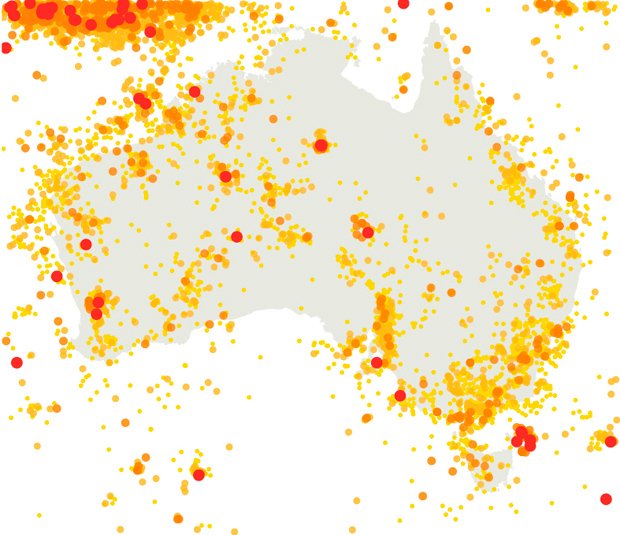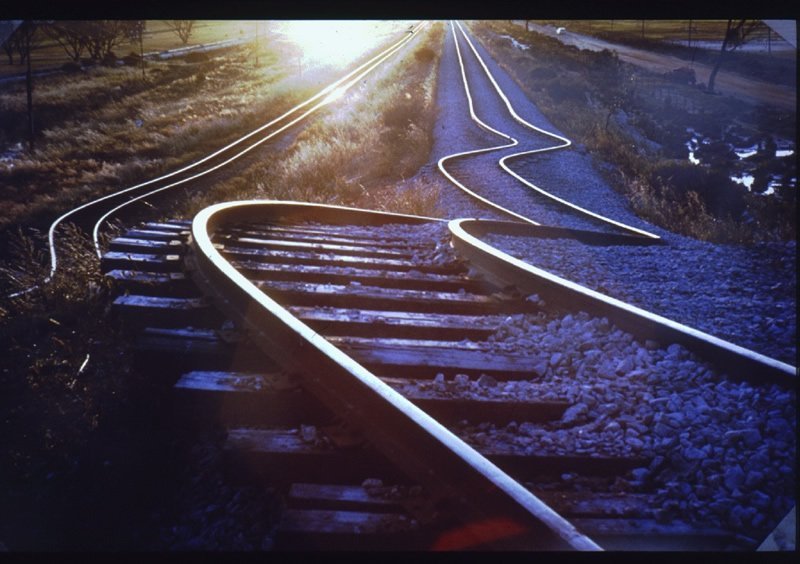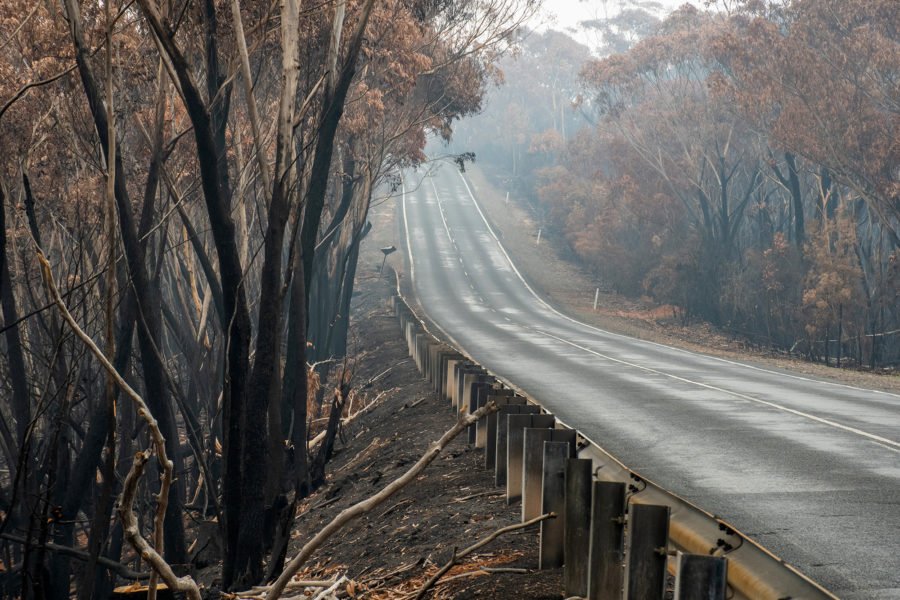Australia’s worst earthquakes

EARTHQUAKES STRIKE when tectonic plates mash and grind against each other. You may think Australia is safe, being in the middle of a plate, but experts say we are rattled by about one small quake a day.
The Indo-Australian plate, on which our continent lies, is colliding with the Pacific plate in the east and the Eurasian plate to the north. When these plates move and jostle around, they get pushed on one side and pulled on the other, so stresses build up inside the plate itself. When these forces get big enough they actually break the rock, which causes vibrations in the Earth.
About every five years the pent-up stresses cause a quake of magnitude 6 or greater. If the epicentre of the quake is at a shallow depth and is under a city, it can cause terrible damage. The regions where violent quakes occur most often are south-western WA, the Flinders Ranges in SA, and across a wide area from Tasmania to northern NSW.
Note: As of 2016, the Inernational Seismological Centre and Geoscience Australia have revised the magnitude scores of Australia’s earthquakes. The scores below have been updated to reflect the change.
Here are the top 10 worst Australian earthquakes in modern times, ranked is by cost, magnitude and damage.
1. Newcastle, NSW (Magnitude 5.6)
28 December 1989
One of Australia’s worst natural disasters, this quake killed 13 people and hospitalised 160. It caused an estimated $4 billion worth of damage to 35,000 homes, 147 schools and 3000 buildings. Damage was reported over an area of 9000sq.km, with movement up to 800km away. The devastation was unusual for a relatively low magnitude quake. Experts say soft sediments may have intensified the shaking, the strength of which older buildings could not withstand.
Read more about the 1989 Newcastle earthquake
2. Beachport, SA (6.5)
10 May 1897
Fifty people were injured in this quake, which was centred off the coast between Beachport and Robe, but was felt throughout southern SA and south-western Victoria.
Most of Beachport and Robe were destroyed, and Kingston and Mount Gambier also suffered damage. The Earth heaved in waves and ruptured to a depth of 4m. In Adelaide, crowds panicked and suffered injuries as they rushed to the exits of swaying buildings.
3. Meckering, WA (6.5)
14 October 1968
This small town, 115km east of Perth, was destroyed by the second-strongest quake recorded in Australia. Twenty people were injured and many buildings damaged, with a cost of $1.5 million (about $18 million today). In Perth buildings swayed and tremors were felt up to 700km from the epicentre. Before the quake, Meckering had 51 dwellings, 12 businesses and 15 public buildings. Only 16 houses and three businesses survived.

Buckled railway lines caused by the 1968 Meckering, WA, earthquake fault. (Image: Geoscience Australia)
4. Ellalong, NSW (5.4)
6 August 1994
Five people were injured and 1000 homes damaged in this earthquake, which hit
the Hunter region of NSW to the tune of $37.2 million in insurance payouts (equivalent to $65 million today). Fifty hotels and other buildings suffered serious damage.
The quake was the biggest in the region since the Newcastle quake in 1989.
5. Adelaide, SA (5.5)
1 March 1954
Citizens of Adelaide woke at 3.45am to the first earthquake to hit the city in almost 100 years. It caused three serious injuries and damaged 3000 buildings, cracking walls, smashing windows and collapsing chimneys, mostly in the southern suburbs. The cost has been estimated at $8 million (about $50 million today), with 30,000 insurance claims filed – but many properties weren’t insured. Because Adelaide sits on heavy clay and rock, amplification of the tremors is thought to have been reduced, resulting in less damage than normally expected from a quake of this magnitude.
6. Warooka, SA (6.0)
19 September 1902
The second-largest recorded SA earthquake, this disaster claimed two lives and damaged stone and masonry buildings. It was the first earthquake in Australia to have associated fatalities – with two people suffering heart attacks. Only one small building in the town escaped damage.
A local newspaper, The Advertiser, reported:
“Women and children rushed screaming into the street, cows bellowed, horses stampeded as if mad, and altogether the scene was one of indescribable noise and confusion.”
7. Meeberrie, WA (6.3)
29 April 1941
Australia’s fifth-largest quake caused little damage when it shook Meeberrie, a region that then had few residents. It did, however, crack all the walls of Meeberrie homestead, a heritage-listed station north of Mullewag; it also burst the rainwater tanks and ruptured the ground, creating huge cracks. Minor damage was also reported in Perth, about 550km away. Fortunately, no injuries were recorded.
8. Tennant Creek, NT (6.6)
22 January 1988
Three quakes of greater than magnitude 6 rattled Tennant Creek in one day, each about half an hour apart. At magnitude 6.6, the largest of these is considered Australia’s biggest quake. Considering the intensity, damage was small. Tremors warped the natural gas pipeline and opened a 35km-long fault scarp, with a step of 2m. Two buildings and three other structures – including the hospital – were damaged, with a total cost of $2.5 million. No injuries were reported.
9. Kalgoorlie-Boulder, WA (5.0)
20 April 2010
Felt up to 200km away from the epicentre, this earthquake caused major damage to the historic buildings in Kalgoorlie-Boulder and injured two people. The strongest quake in the goldfields region for 50 years, it shut down the local mines temporarily, including the Super Pit, the largest open cut mine in Australia.
Some scientists suggest the earthquake may have actually been a ‘rock-burst’, induced by deep mining and not a natural quake at all.
10. Cadoux, WA (6.1)
2 June 1979
The second-most damaging earthquake in WA’s recorded history injured one person
and struck 25 buildings in the wheatbelt town of Cadoux, 165km north-east of
Perth. Roads, railway lines, pipes and powerlines were damaged in an area of about
4ha, then estimated at a total cost of $3.8 million. A fault 15km long opened on the Earth’s surface – only about 12 earthquakes in Australia’s modern history have caused the ground to rupture.
Receive great savings and a gift when you subscribe to our magazine
READ MORE:
- Earthquakes in Australia
- Australia has a new biggest earthquake
- On this day: Newcastle earthquake strikes
- Earthquakes: the 10 biggest in history
- The Australian town that won’t stop shaking




